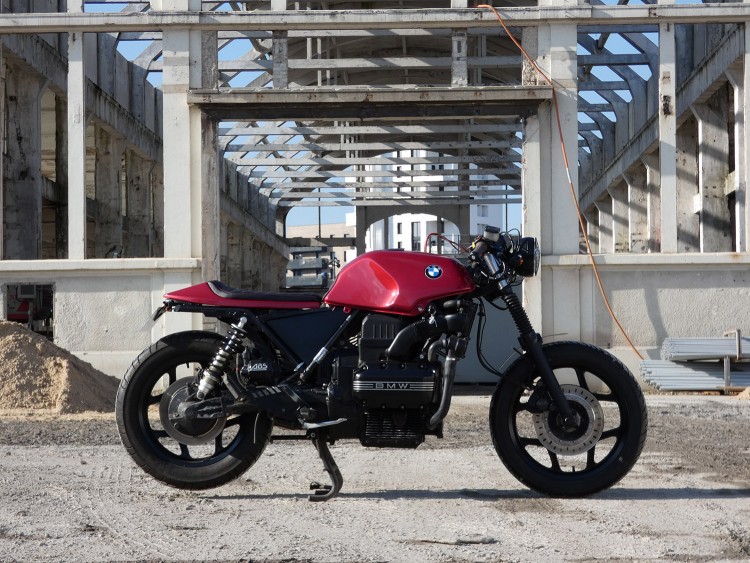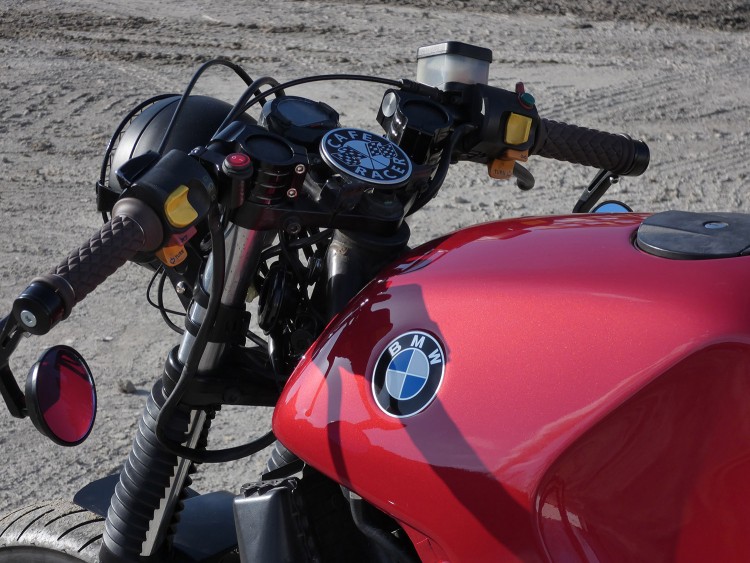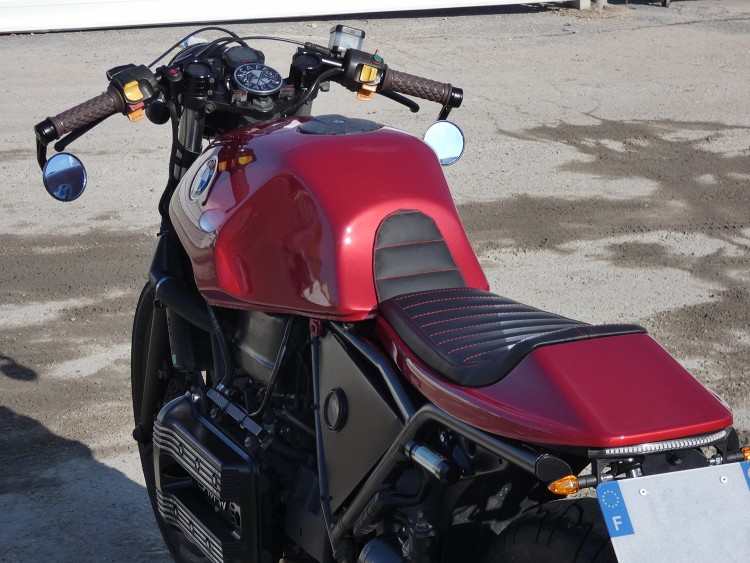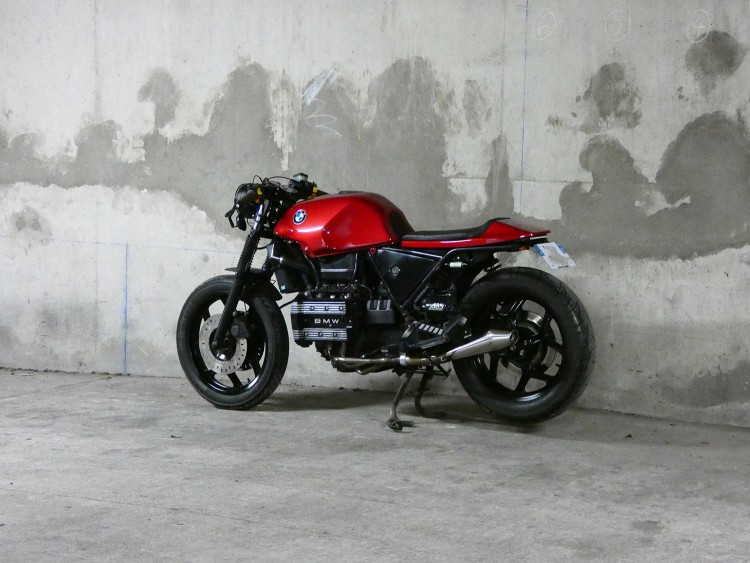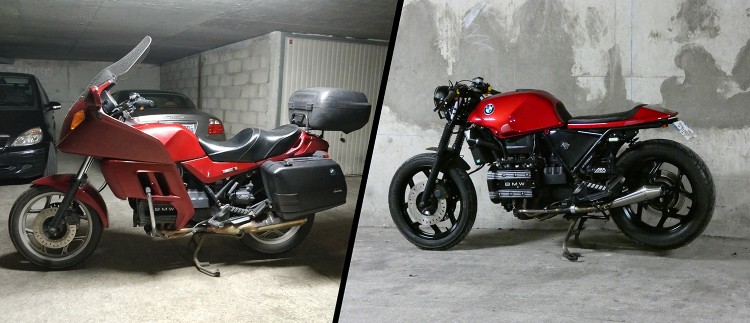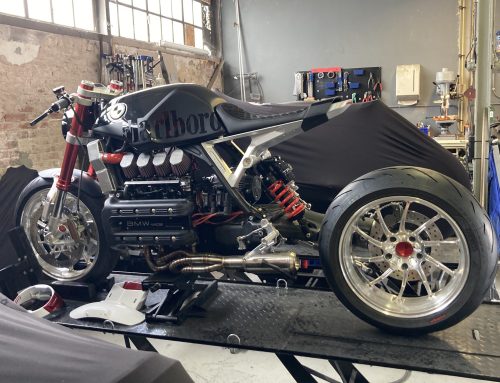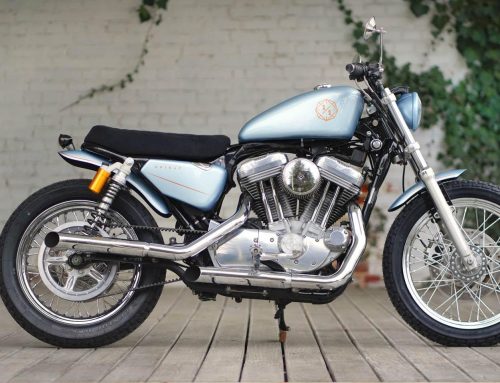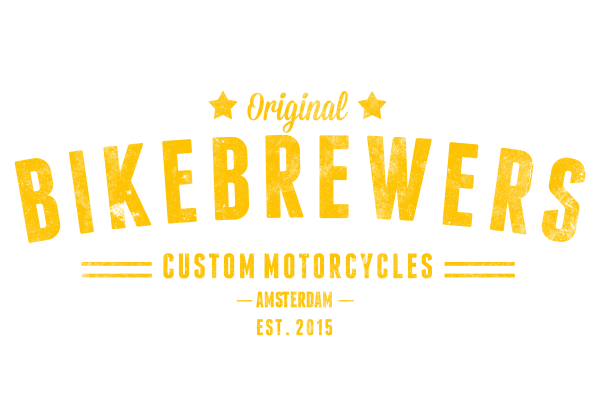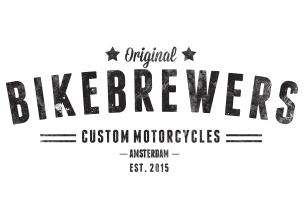Where the classic airheads are a very popular base bike for building a BMW cafe racer, the search for a used bike became more difficult every day. Prices have risen to astronomical heights so builders with a tight budget had to look for other base bikes. A logic step was to look for the BMW K-series. Maybe not as charismatic as the R-series, it’s still a BMW, which means reliability, comfort, rideability and easy to work on. The bike you see here is built by Tom Racing Designs. And if you’ve never heard of it, that can be right: it’s Tom’s first build. We’ve pitched six question:
Why did you build this bike?
I always loved cafe racers and building things, I love DIY in general and always want to do things by myself when possible rather than buying things. Loving motorcycle and that kind of bikes, I wanted to build one of my own, something unique.
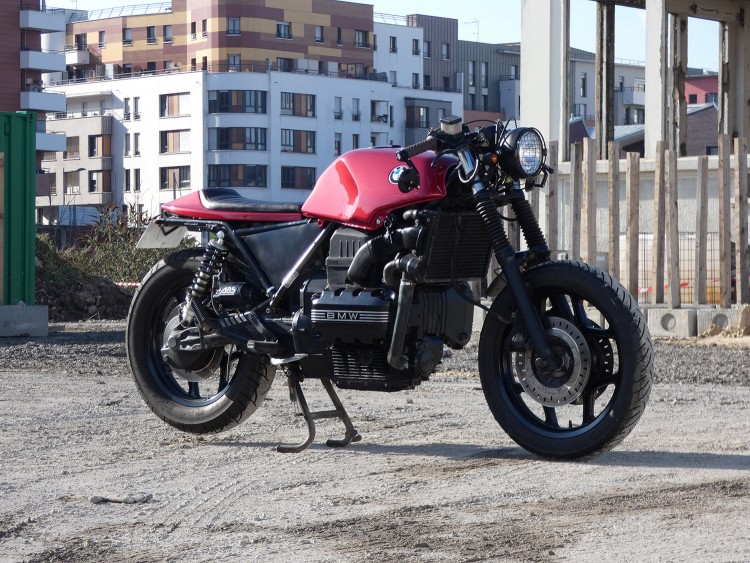
Why did you pick this base bike and where does it come from?
I chose the BMW K75 because I loved its engine and massive fuel tank. The engines of the BMW K series were pretty uncommon in their configuration: a flat 3 (for the K75, or 4 for the K100) with the crankcase and cam cover on the sides, I just love the look of those massive covers with the BMW logo and found this engine unique and beautiful, plus its 3 cylinders sounds awesome. The fuel tank also looks really good, it’s huge and fit perfectly the lines of a cafe racer in my opinion.
The bike I got came from Germany and was imported in France by its second owner, a third one then bought the bike a few years ago and I bought it from him in the suburbs around Paris. The bike was running fine although it needed some care with many corroded parts and some oil leaks.
What was your idea or vision?
I wanted to put all the attention on the engine, especially on those crankcase and camshaft covers, so the rest of the bike had to be pretty light, so I went with a slim cafe racer/flat tracker seat painted in the same color as the tank. I also chose the clip on bars to keep everything not too high.
The K75 RT is a very, very heavy bike so the goal was also to make it lighter, so it’s easier to ride and to put on its central stand haha
Any interesting challenges?
Well the biggest challenge for me is that I do not have any sort of garage or workshop… nor access to electricity (so no power tools). All I have is a parking spot in my basement so I had to figure out ways to build this bike with very basic tools (a hacksaw to cut the frame for example). I also had to choose ways to install thing that did not need any welding, or angle grinders, etc.
Thing is, I recorded the entire transformation process with my GoPro to make a timelapse, you can watch the whole build process here to have an idea:
Did you got help from others or did you outsource any work?
Nope, not really, I did everything myself, I just asked a guy from Canada to build an Arduino module (like a BEP) in order for my speedometer to work properly so he made it send it to me and I installed everything.

What modifications are made and what parts are used?
The main modifications I made (and not general maintenance or paint job), were the flat tracker style seat, the new exhaust system, clip-on bars installed above the triple clamps as I lowered the front forks, a new small digital speedometer, homemade aluminium side panels, homemade aluminium front mudguard, new headlight, etc. Obviously, I also got rid of all the fairings and luggage and I’ve repainted the wheels and engine in black.
And most important: how does it ride?
It rides like a charm! It sounds awesome, has plenty of power and is now much lighter than the original bike! What I love about this bike is that every biker loves it, no matter if they ride a sportbike, a chopper, a naked bike, etc… they all stop to have a look at this bike! I also have many people on sidewalks asking me to stop to look at it :)
Moreover, this bike was my very first build and it made me want to keep going so I already made 2 other bikes and I’m still working on some :)
Share This Story, Choose Your Platform!
Tags
Where the classic airheads are a very popular base bike for building a BMW cafe racer, the search for a used bike became more difficult every day. Prices have risen to astronomical heights so builders with a tight budget had to look for other base bikes. A logic step was to look for the BMW K-series. Maybe not as charismatic as the R-series, it’s still a BMW, which means reliability, comfort, rideability and easy to work on. The bike you see here is built by Tom Racing Designs. And if you’ve never heard of it, that can be right: it’s Tom’s first build. We’ve pitched six question:
Why did you build this bike?
I always loved cafe racers and building things, I love DIY in general and always want to do things by myself when possible rather than buying things. Loving motorcycle and that kind of bikes, I wanted to build one of my own, something unique.

Why did you pick this base bike and where does it come from?
I chose the BMW K75 because I loved its engine and massive fuel tank. The engines of the BMW K series were pretty uncommon in their configuration: a flat 3 (for the K75, or 4 for the K100) with the crankcase and cam cover on the sides, I just love the look of those massive covers with the BMW logo and found this engine unique and beautiful, plus its 3 cylinders sounds awesome. The fuel tank also looks really good, it’s huge and fit perfectly the lines of a cafe racer in my opinion.
The bike I got came from Germany and was imported in France by its second owner, a third one then bought the bike a few years ago and I bought it from him in the suburbs around Paris. The bike was running fine although it needed some care with many corroded parts and some oil leaks.
What was your idea or vision?
I wanted to put all the attention on the engine, especially on those crankcase and camshaft covers, so the rest of the bike had to be pretty light, so I went with a slim cafe racer/flat tracker seat painted in the same color as the tank. I also chose the clip on bars to keep everything not too high.
The K75 RT is a very, very heavy bike so the goal was also to make it lighter, so it’s easier to ride and to put on its central stand haha
Any interesting challenges?
Well the biggest challenge for me is that I do not have any sort of garage or workshop… nor access to electricity (so no power tools). All I have is a parking spot in my basement so I had to figure out ways to build this bike with very basic tools (a hacksaw to cut the frame for example). I also had to choose ways to install thing that did not need any welding, or angle grinders, etc.
Thing is, I recorded the entire transformation process with my GoPro to make a timelapse, you can watch the whole build process here to have an idea:
Did you got help from others or did you outsource any work?
Nope, not really, I did everything myself, I just asked a guy from Canada to build an Arduino module (like a BEP) in order for my speedometer to work properly so he made it send it to me and I installed everything.

What modifications are made and what parts are used?
The main modifications I made (and not general maintenance or paint job), were the flat tracker style seat, the new exhaust system, clip-on bars installed above the triple clamps as I lowered the front forks, a new small digital speedometer, homemade aluminium side panels, homemade aluminium front mudguard, new headlight, etc. Obviously, I also got rid of all the fairings and luggage and I’ve repainted the wheels and engine in black.
And most important: how does it ride?
It rides like a charm! It sounds awesome, has plenty of power and is now much lighter than the original bike! What I love about this bike is that every biker loves it, no matter if they ride a sportbike, a chopper, a naked bike, etc… they all stop to have a look at this bike! I also have many people on sidewalks asking me to stop to look at it :)
Moreover, this bike was my very first build and it made me want to keep going so I already made 2 other bikes and I’m still working on some :)

